Stationary waves, diffraction and interference (Short note)
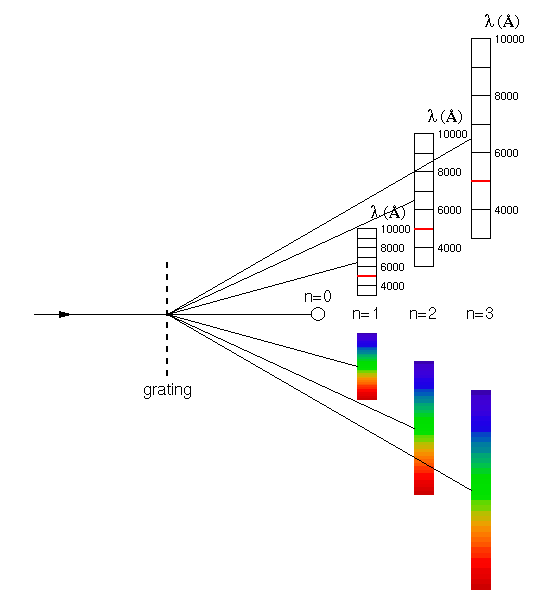
In this article, I will be discussing stationary waves, diffraction and interference
Principle of superposition
The Principle of Superposition states that when two or more waves meet at a point, the resultant displacement at that point is equal to the sum of the displacements of the individual waves at that point.
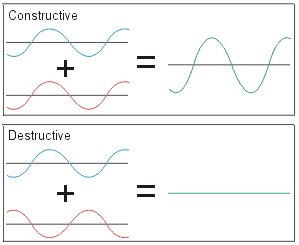
For constructive interfernce: the resultant displacement is always higher than the displacement of the individual waves.
For destructive interfernce:the resultant displacement is always smaller than the displacement of the individual waves.
Stationary waves
A stationary wave is formed by two progressive waves of the same type, amplitude and frequency travelling in opposite directions superpose.
show an understanding of experiments that demonstrate stationary waves using microwaves, stretched strings and air columns
Microwaves
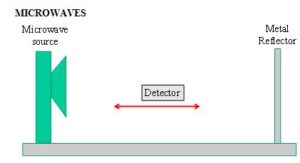
The Microwave source generate the wave signal while the metal reflector reflect the wave back, by this there the two progressive waves will superpose.
Stretched string
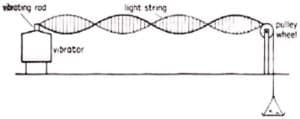
Explain the formation of a stationary waves using a graphical method, and identify nodes and antinodes
Read: Overtone in closed and open pipe
Node: it is a point of zero amplitude
Antinode: it is a point of maximum amplitude
Recall,
![]()
Differences between stationary and progressive waves
staionary waves
- No energy is transported by the wave
- the wave profile does not advance
- amplitude varies from maximum at the anti-nodes to zero at the node
Progressive waves
- energy is transported in the direction of the wave
- wave profile advances
- amplitude is the same for all particles in the wave
Diffraction
Diffraction is the spreading of waves through an aperture or round an obstacle.
- The bending of waves around an obstruction
- As the size of the aperture or the object decreases the effects of diffraction increase
- The wavelength needs to be similar to the size of the aperture for diffraction to be noticeable
The smaller the size of the aperture, the greater the spreading of the waves (if the width of the aperture is about the same size as the wavelength, λ, the diffraction effect is very considerable).
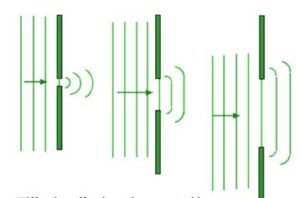
Diffraction grating
A diffraction grating is a plate on which there is a very large number of identical, parallel, very closely spaced slits.
Uses of diffraction grating
- it is use to determine the wavelength of light
- it can be used to make spectrometer
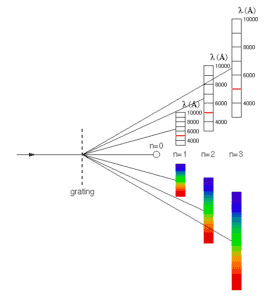
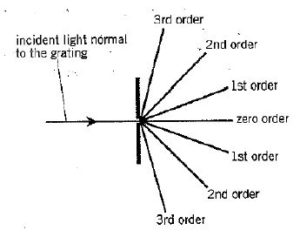
Diffraction grating equation can be represented by
![]()
n is the number of order
λ is the wavelength
d is the slit sepation
ø is the angle of diffraction
Interference
Interference is the superposing of two or more waves to give a resultant wave whose displacement is given by the principle of superposition.
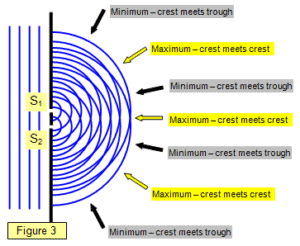
At regions of maxima, constructive interference occurs (i.e the waves arrive at these points in phase), resulting in maxima amplitude, hence high intensity
At regions of minima, destructive interference occurs (i.e the waves arrive at these points in anti-phase), resulting in minima or zero amplitude, hence low or zero intensity.
Young’s double slit experiment
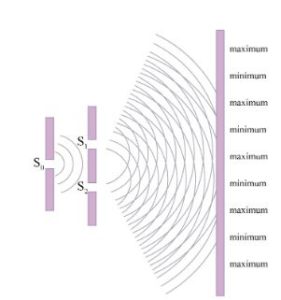
Monochromatic light talks about light with one wavelength, example red light
polychromatic light consists more than one wavelength, example visible or white light
Coherent source: waves coming from them are always at a constant phase difference
Bright fringes are formed due to constructive interference(i.e the waves arrive at these point in phase), while
Dark fringes are due to destructive (i.e the waves arrive at these points is anti-phase(180 degree)- no resultant amplitude, which then appear dark)
For interference fringes to be observable
- The source must be coherent; that is they must maintain a constant phase difference
- The source must have the same frequency (for light waves, this mean that they must be monochromatic)
- The pronciple of superposition must apply(the source must produce the same type of waves)
- The source must have approximately the same amplitude
Condition for constructive interference
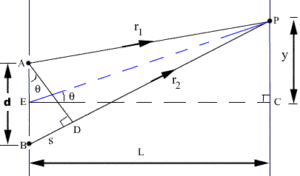

B is the second source
A is the first source
Condition for destructive interference


λ is the wavelength
a is the separation of the slits
x is the fringe separation
D is the separation between the screen and the double slit
Recommended: Solved questions on waves
